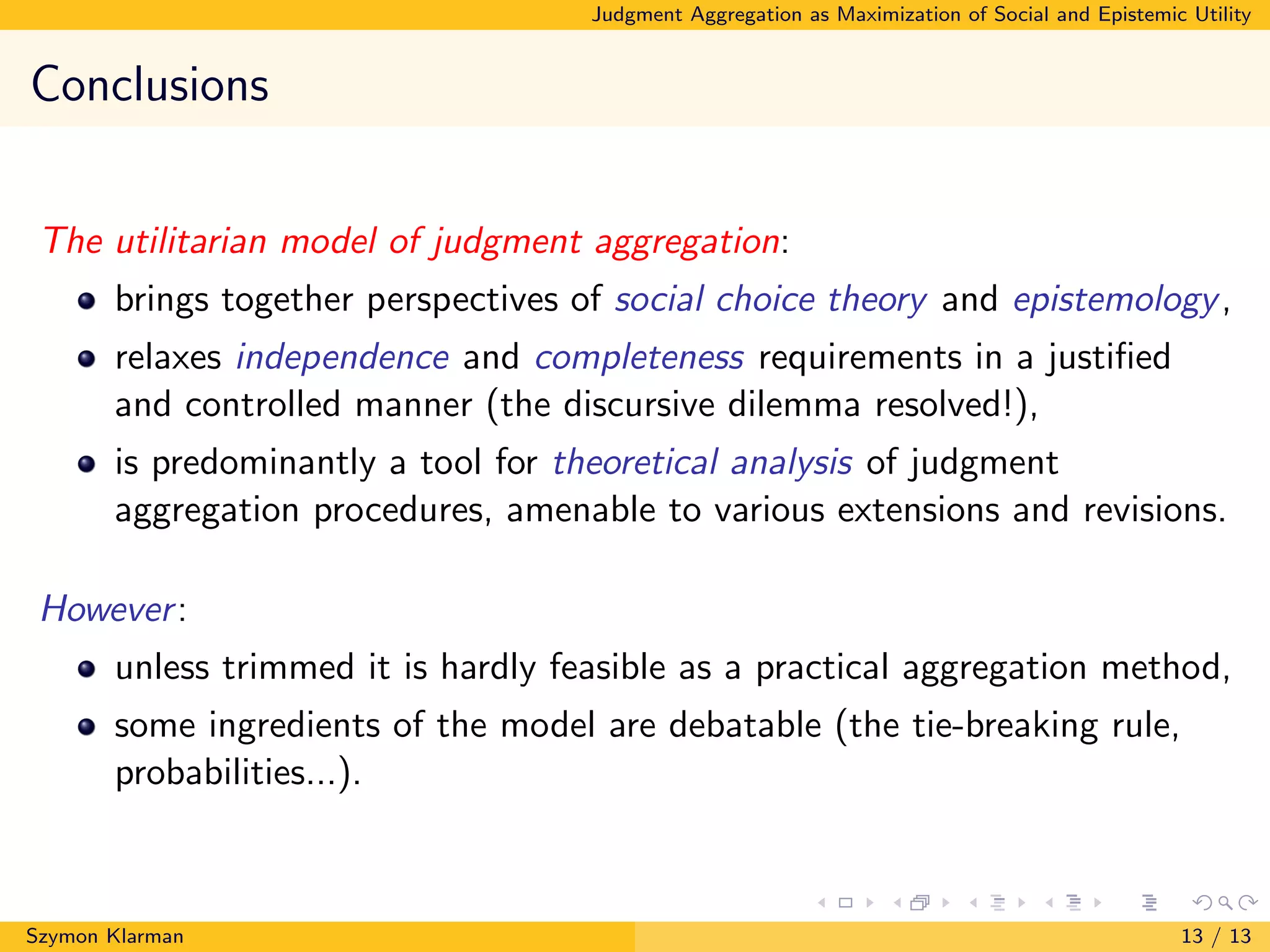The document discusses judgment aggregation as the maximization of social and epistemic utility, exploring the challenges of collective decision-making. It highlights the impossibility of the propositionwise majority voting rule and offers solutions by relaxing rationality constraints. The paper proposes a utilitarian model that reconciles social choice theory with epistemology, although its practical application remains debatable.

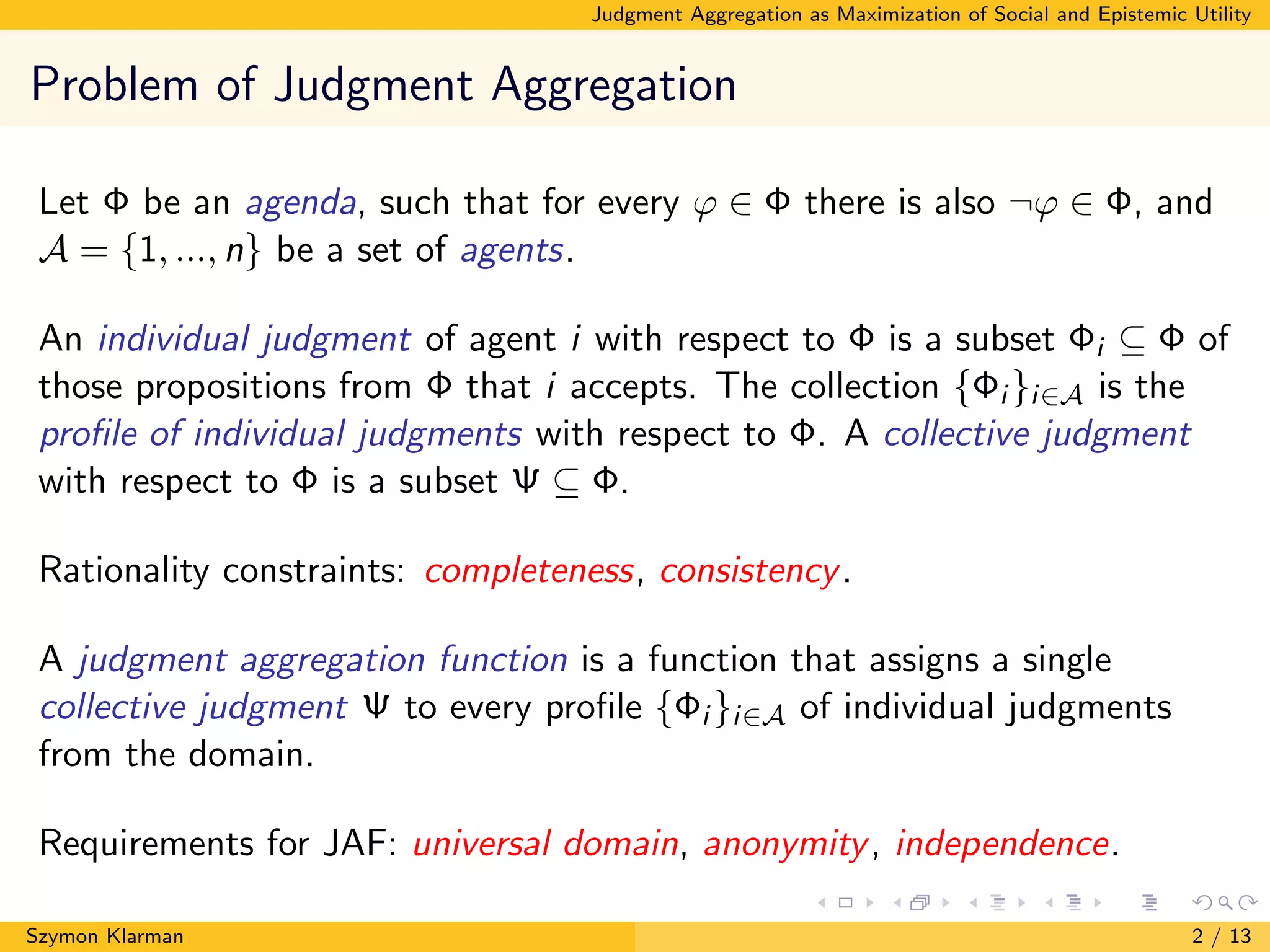
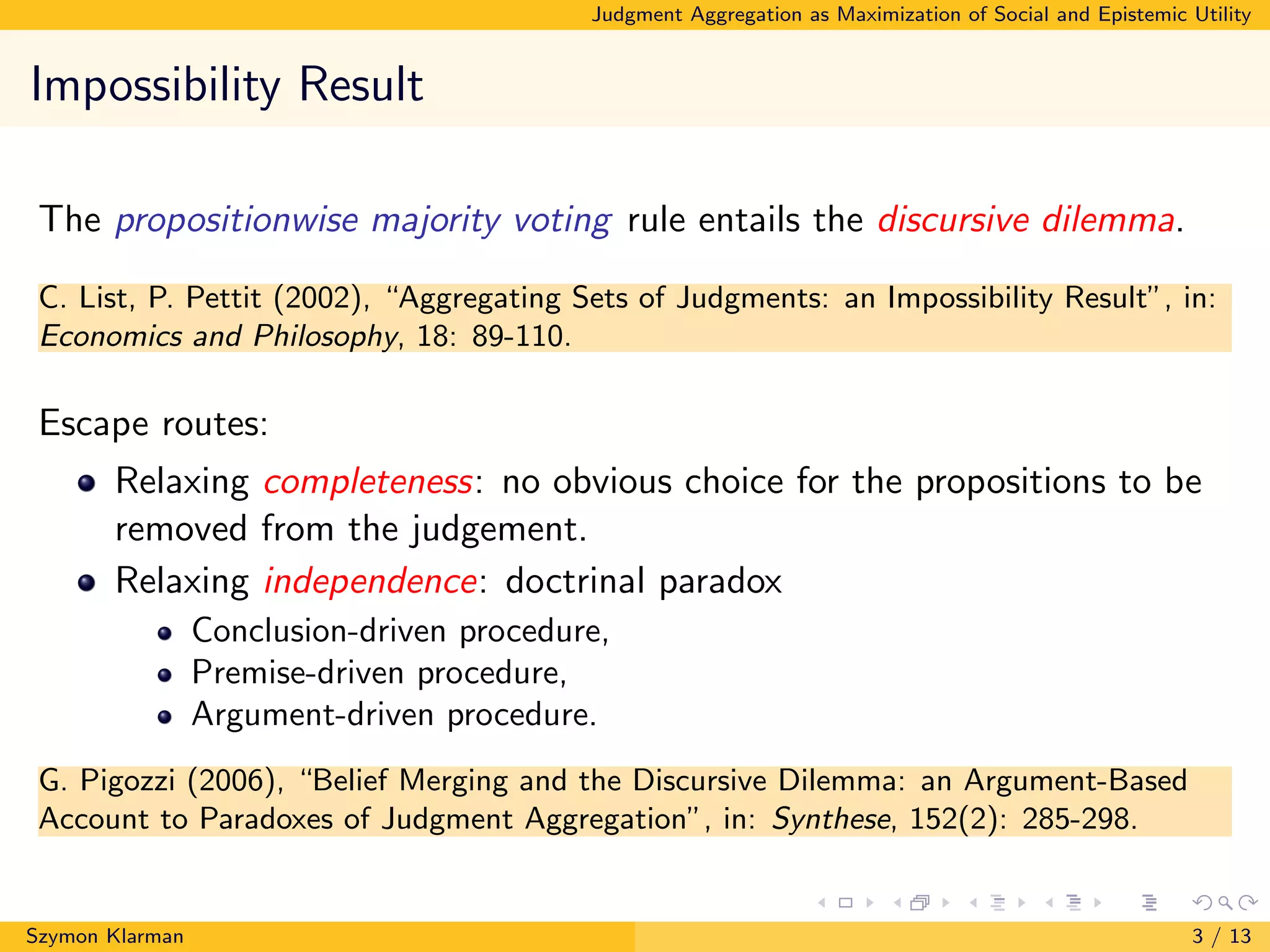

![Judgment Aggregation as Maximization of Social and Epistemic Utility
Decision-Making Under Uncertainty
Maximization of expected utility:
Choose A that maximizes EU(A) = i∈[1,m] P(vi )u(A, vi ).
Szymon Klarman 5 / 13](https://image.slidesharecdn.com/klarman-comsocpresentation-170823073653/75/Judgment-Aggregation-as-Maximization-of-Epistemic-and-Social-Utility-5-2048.jpg)

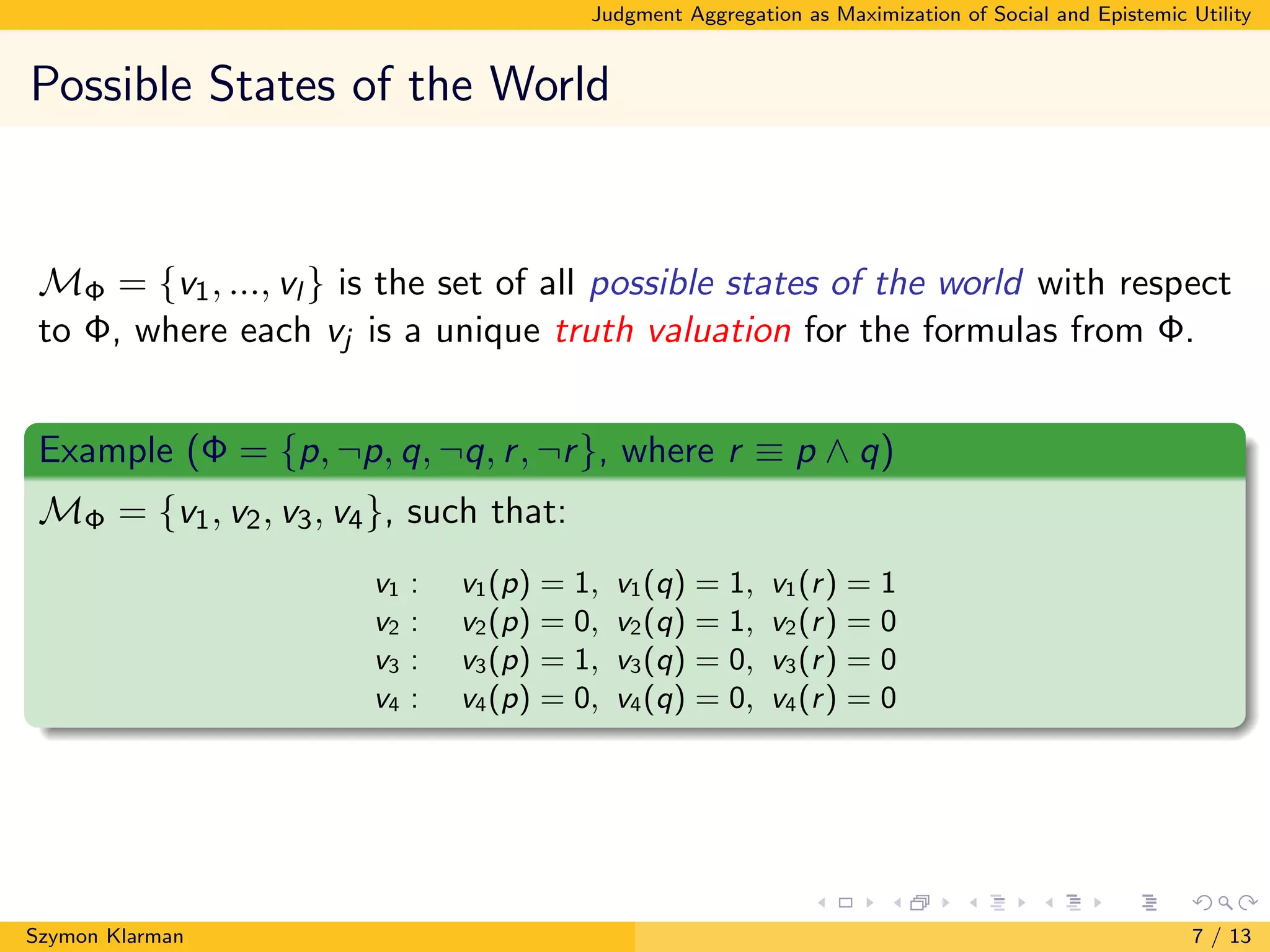
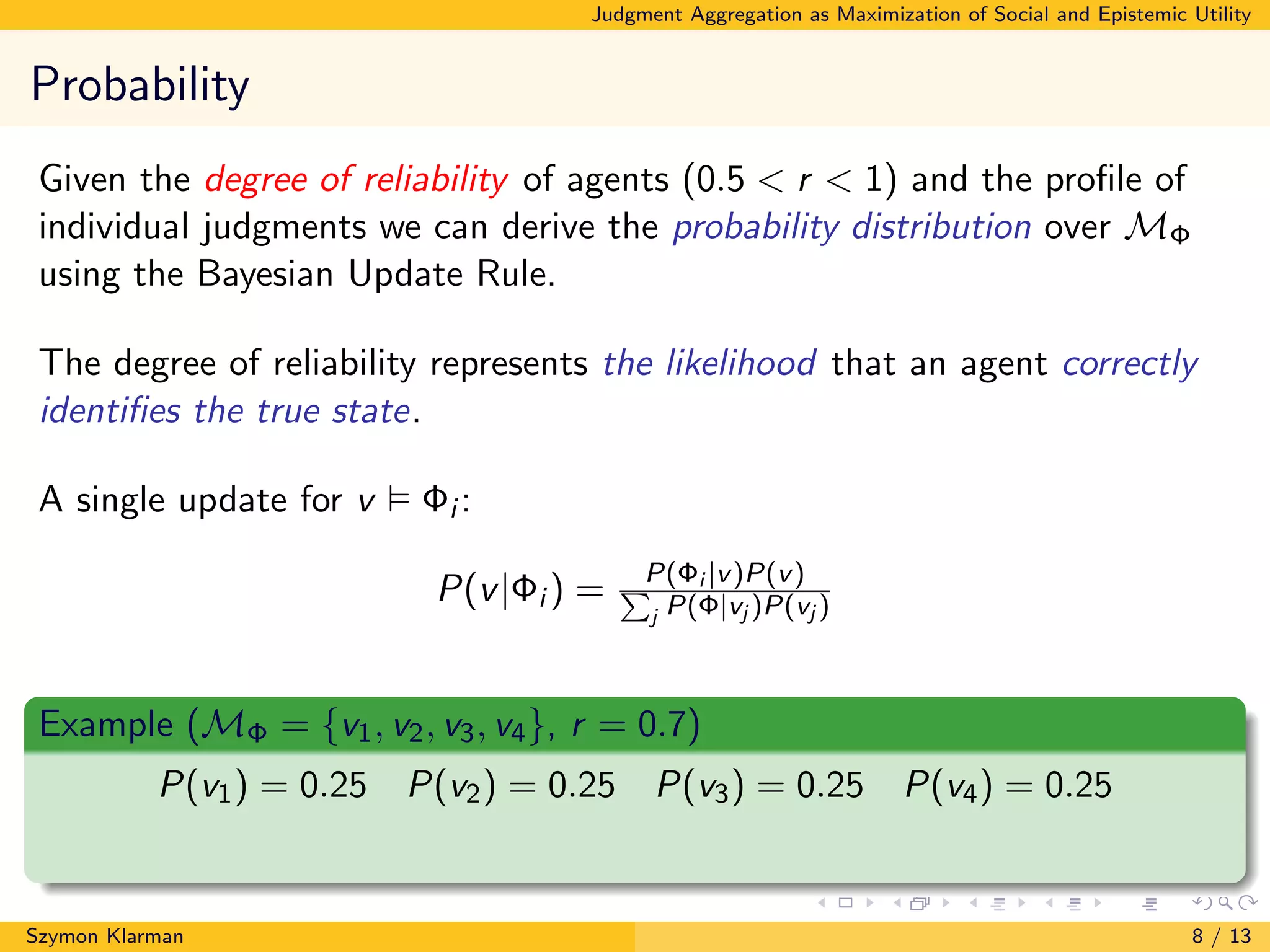

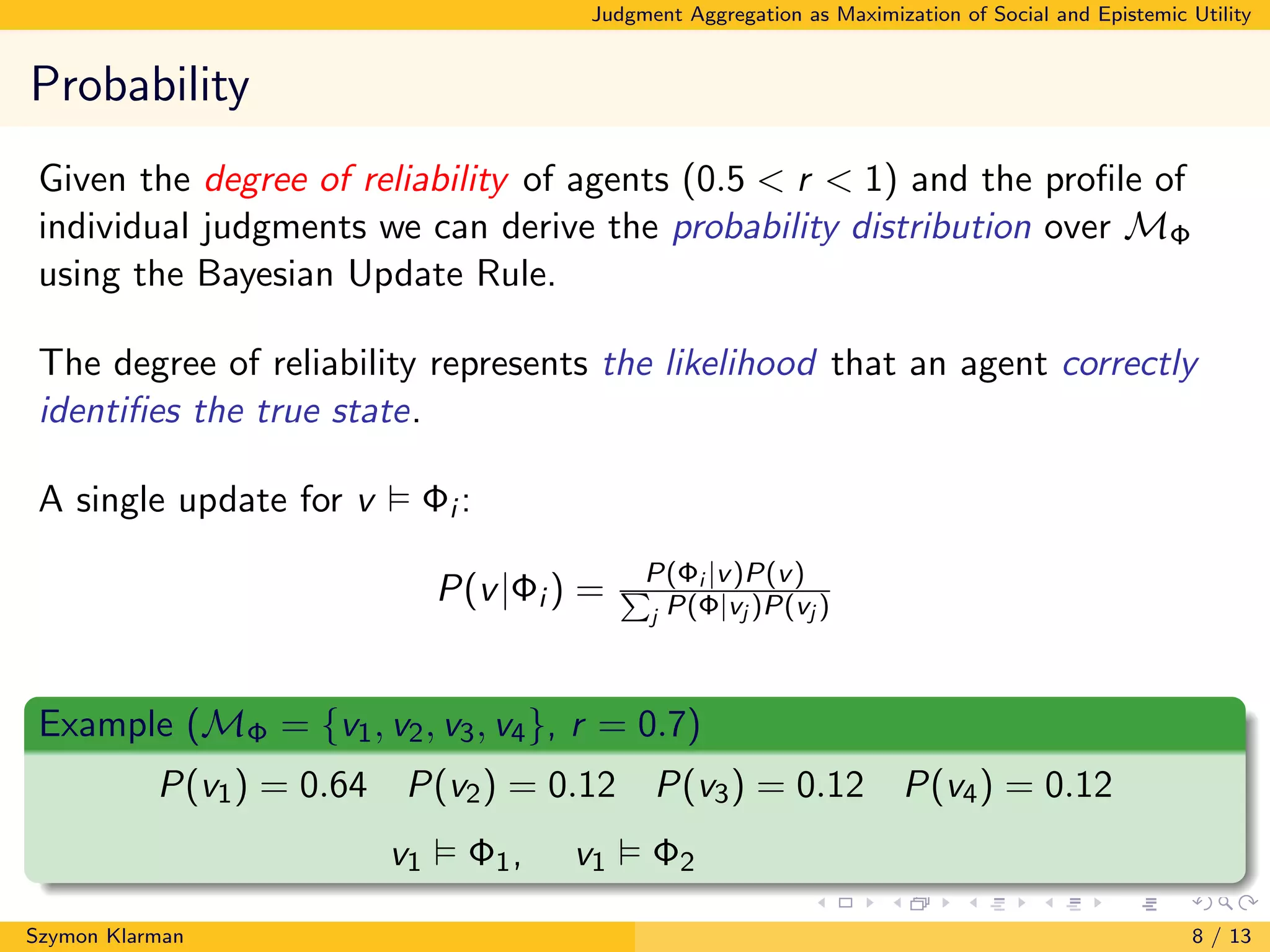

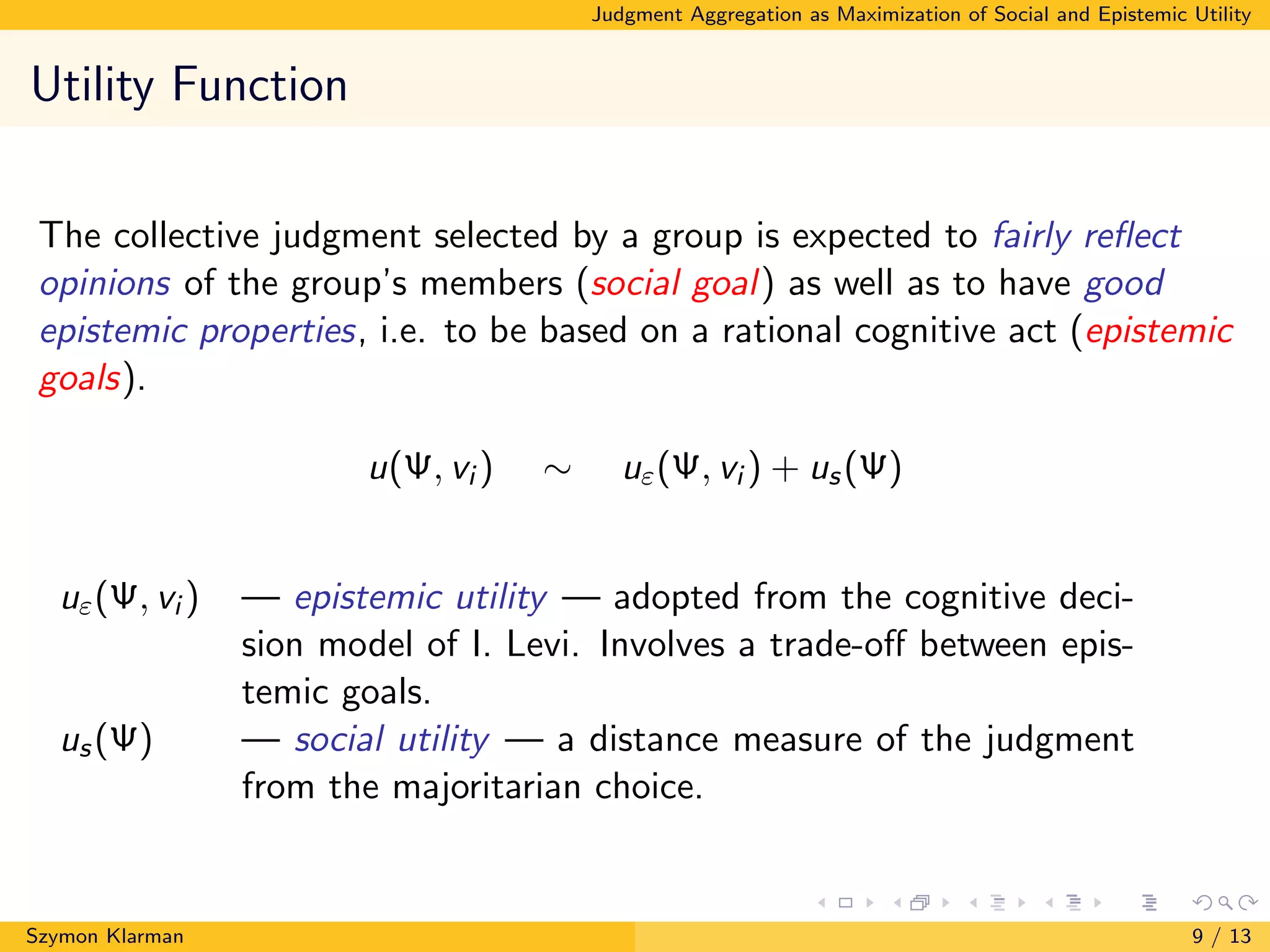
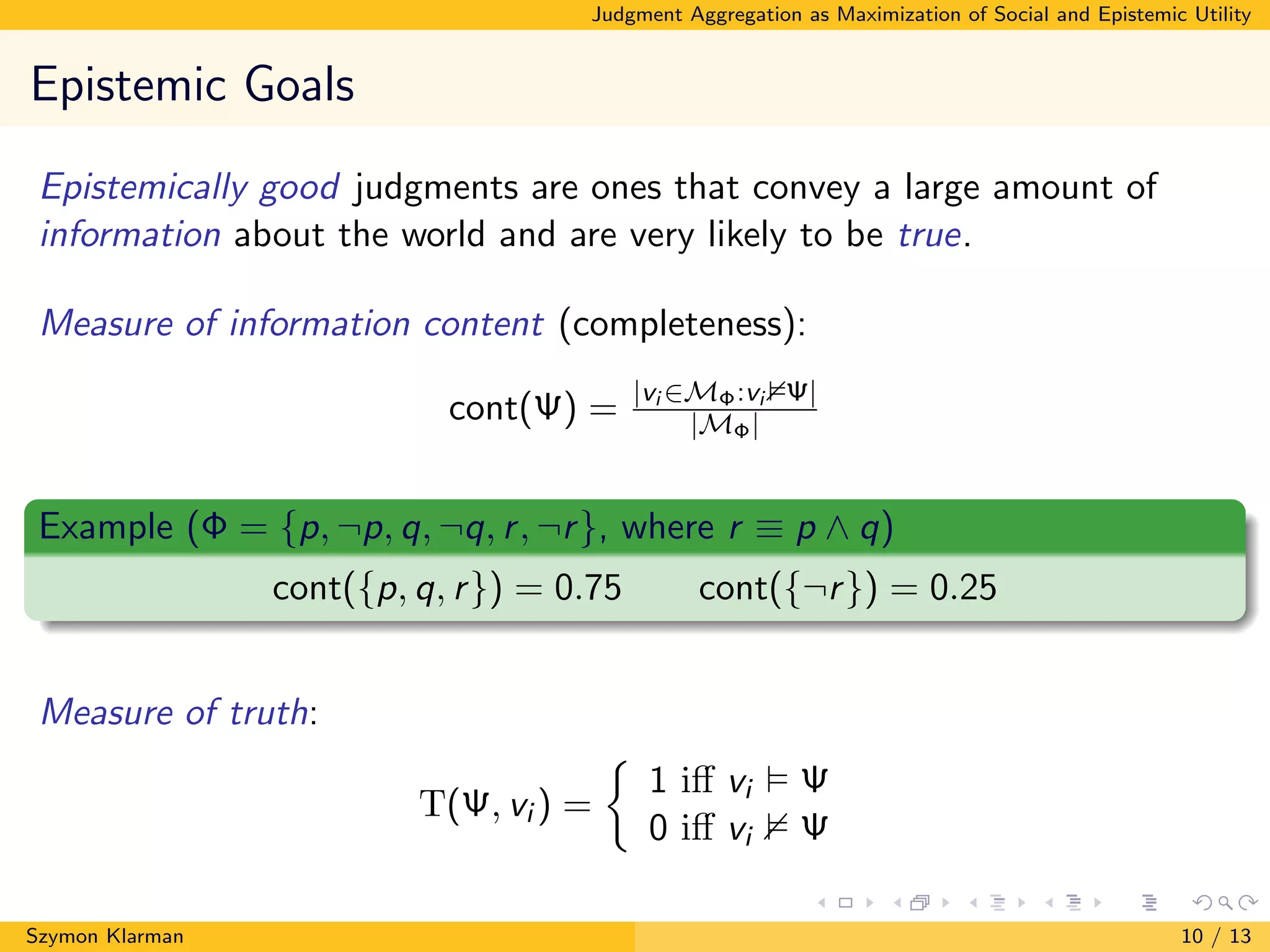

![Judgment Aggregation as Maximization of Social and Epistemic Utility
Acceptance Rule
The total utility of accepting a collective judgment:
u(Ψ, vi ) = β (α cont(Ψ) + (1 − α) T(Ψ, vi )) + (1 − β) SA(Ψ)
= β uε(Ψ, vi ) + (1 − β) us(Ψ)
Coefficient β ∈ [0, 1] should reflect the ’compromise’ preference of the
group between the epistemic and social goals; coefficient α ∈ [0, 1] —
between information content and truth.
(Provisional) tie-breaking rule:
In case of a tie accept the common information contained in the selected
collective judgments.
The utilitarian judgment aggregation function
JAF({Φi }i∈A) = Ψ
such that Ψ ∈ arg maxΨ∈CJ vi ∈MΦ
P(vi )u(Ψ, vi )
Szymon Klarman 12 / 13](https://image.slidesharecdn.com/klarman-comsocpresentation-170823073653/75/Judgment-Aggregation-as-Maximization-of-Epistemic-and-Social-Utility-15-2048.jpg)
